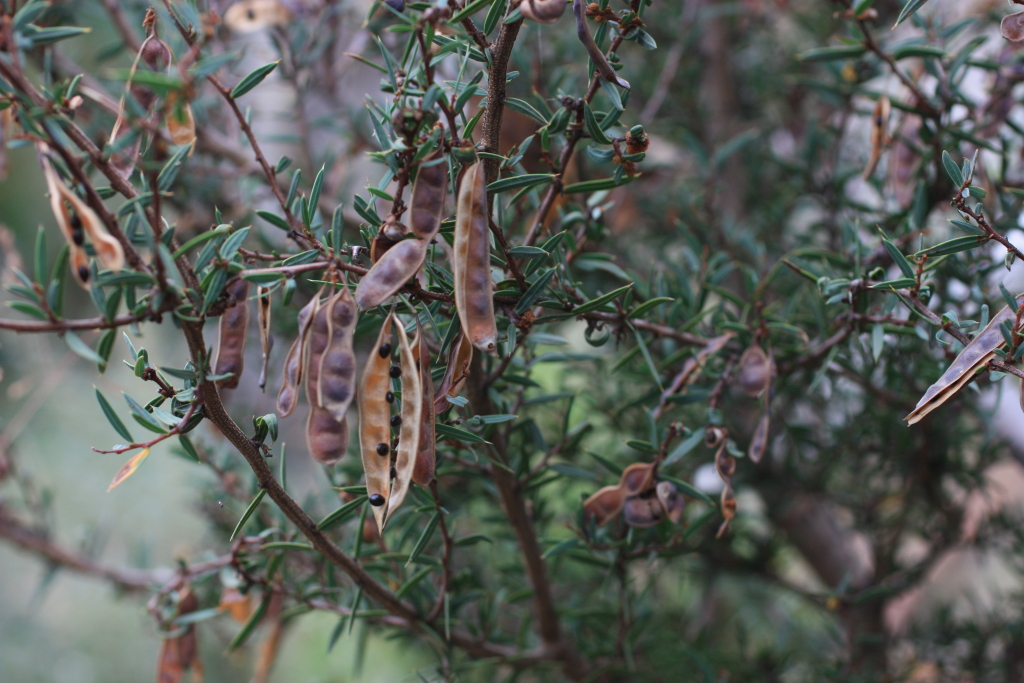Acacia siculiformis
A.Cunn. ex Benth. Dagger WattleGlabrous shrub, to 2–3 m high, sometimes procumbent; penultimate branchlets with prominent lenticels and/or bark breaking into more or less rectangular flakes. Phyllodes spreading to inclined, sessile, lanceolate to narrowly elliptic, normally slightly asymmetric, usually 1–3.5 cm long, 1.5–4 mm wide, rigid, base unequal and oblique, pungent; midrib prominent; gland obscure, sometimes absent, 3–6 mm above pulvinus; stipules c. 0.5 mm long. Peduncles normally 1 per axil, 0–13 mm long, basal bract frequently cleft; heads globular, 30–40-flowered, pale yellow. Flowers 5-merous; sepals free. Pods stalked, oblong to narrowly oblong, to 5.5 cm long, 4–7 mm wide, chartaceous; seeds transverse to oblique, oblong to elliptic, 3–3.5 mm long, dark grey-brown to black, without aril, funicle filiform. Flowers Sep.–Dec.
VRiv, GipP, GGr, NIS, EGU, HSF, HNF, MonT, VAlp. Also NSW, ACT, Tas. Widespread in north-eastern Victoria, usually in open-forest or subalpine woodland, in rocky or sandy situations, often near streams. A disjunct occurrence at Mount Zero in the Grampians requires further confirmation.
Plants from high elevations with heads more or less sessile, pods c. 3 cm long and phyllodes sometimes only c. 5 mm long, have been sometimes referred to A. siculiformis var. bossiaeoides (syn. A. stuartiana). Although herbarium material suggests clinal variation to the typical variant (peduncles 3-13 mm long, pods to 5.5 cm long), future field studies may show that var. bossiaeoides warrants recognition.
Entwisle, T.J.; Maslin, B.R.; Cowan, R.S.; Court, A.B. (1996). Mimosaceae. In: Walsh, N.G.; Entwisle, T.J., Flora of Victoria Vol. 3, Dicotyledons Winteraceae to Myrtaceae, pp. 585–658. Inkata Press, Melbourne.
 Spinning
Spinning

